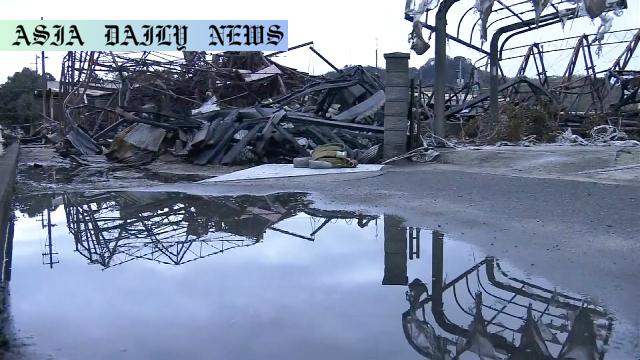Wildfires: Rain brings relief to wildfire-hit western Japan as Imabari and Okayama report substantial progress in containment.
Rainfall provides significant progress in wildfire containment across Imabari and Okayama.
Over 440 hectares burned, with 21 structures damaged and nearly 6,000 evacuated.
Imabari still investigating heat remnants, Okayama declares fire officially contained.
South Korea faces its worst wildfire crisis, with 28 fatalities and mass evacuations.

Rainfall Aids Wildfire Relief in Imabari and Okayama
The western regions of Japan, particularly Imabari and Okayama, are breathing a collective sigh of relief following much-needed rainfall. This major downpour marks the first instance of rain since the two wildfires broke out and had devastating effects earlier in the week. Firefighting teams are now reporting substantial progress in containing the fires, with Okayama officially declaring its wildfire completely extinguished and lifting all evacuation orders on Friday.
In Imabari, however, the situation remains under cautious observation. While visible flames and smoke are reportedly absent, drones equipped with thermal detection systems have picked up residual heat sources, indicating remnants of the blaze might still pose risks. Despite this, city officials expressed optimism, stating that rainfall coupled with wet winds has rendered the area considerably safer. Evacuation orders remain active for nearly 6,000 residents, but gradual lifting is being considered as conditions improve.
Damage Assessment: A Landscape Scarred by Fire
The extent of destruction caused by these wildfires is stark. Over 440 hectares of land across the two cities have been ravaged, with 21 structures, including family homes and warehouses, sustaining significant damage. Several families have been displaced, and local governments are now shifting focus toward restoration efforts. Relief measures are being prepared to assist affected residents and rebuild damaged infrastructure while officials monitor the affected terrain for further risks.
The wildfires have also brought into focus the region’s vulnerability to climatic extremes. Inconsistent rainfall patterns, dry spells, and escalating temperatures due to global climate changes are all potential hazard accelerants, according to experts. Moving forward, there may be an increased emphasis on revisiting urban planning and fire-prevention strategies in these wildfire-prone areas.
Broader Context: South Korea’s Own Wildfire Emergency
While Japan is managing its situation, its neighbor, South Korea, is simultaneously battling one of the worst wildfire crises in its history. In North Gyeongsang Province, flames have scorched vast landscapes, affecting communities on an unprecedented scale. As of Friday morning, authorities reported that 94% of the firefighting effort was successful, yet the human toll remains devastating. At least 28 lives have been lost, and close to 30,000 people have been evacuated from their homes.
This parallel situation puts into perspective the shared challenges of wildfire management in Asia. Both nations are grappling with unpredictable environmental hazards, underscoring the pressing need for regional cooperation and resource-sharing initiatives. Learning from each other’s crisis-response strategies will be crucial in mitigating future catastrophes of this magnitude.
Looking Forward: Restoration and Resilience
As western Japan moves toward recovery, there is an opportunity to reflect on the lessons learned from this disaster. The swift role of natural rainfall in fire containment highlights the interconnectedness of climatic patterns and disaster response. Moving forward, Imabari and Okayama authorities may consider investing in technology-driven solutions, such as drone surveillance for early fire detection, and enhanced public education efforts focusing on fire safety.
The need for community resilience cannot be overlooked. Rebuilding efforts must go beyond infrastructure, fostering emotional and psychological support for those displaced or traumatized by the wildfires. Ultimately, these crises offer a stark reminder of the dual need to combat climate change while improving disaster risk-management frameworks across vulnerable regions in Japan and beyond.



Commentary
Understanding the Role of Natural Forces in Disaster Management
The recent rains that brought relief to fire-hit regions in Japan highlight nature’s unpredictability. For days, firefighting teams in Imabari and Okayama struggled to contain the rapidly spreading blazes. The arrival of rain did not only extinguish flames but also cleansed the air, offering residents an immediate sense of relief. This underscores how our strategies for combating natural disasters must work in harmony with, rather than against, environmental forces.
The Need for Proactive Measures and Resilience
The extent of damage and displacement caused by these wildfires raises important questions about preparedness. While natural factors like rain played a pivotal role in relief efforts, more robust human-driven interventions are needed. Investing in early warning systems, training local residents on fire safety, and adopting adaptive urban designs could drastically reduce the impact of such crises in the future. Furthermore, drought-prone areas need targeted risk mitigation strategies, given Japan’s observed climatic variability in recent years.
Parallels Across Borders: Shared Challenges
Japan’s struggle with wildfires parallels South Korea’s, where human and economic losses have been far graver. This serves as a wake-up call for Asian nations to collaborate on regional disaster preparedness frameworks. A shared repository of best practices, along with pooling of technological resources like drones for fire scanning or predictive models, could offer mutual benefits. Ultimately, addressing wildfire risks is a shared environmental challenge requiring collective action that transcends borders.
The Road Ahead: Lessons from Crisis
As evacuation orders begin to lift and affected communities in Japan rebuild, public-policy planners must reassess their disaster-readiness protocols. This crisis sheds light on the pressing need to balance short-term relief measures with long-term sustainability initiatives focused on climate change mitigation. Through thoughtful planning and strategic collaboration, Japan—and indeed the entire region—may emerge stronger and more prepared to tackle similar crises in the future.